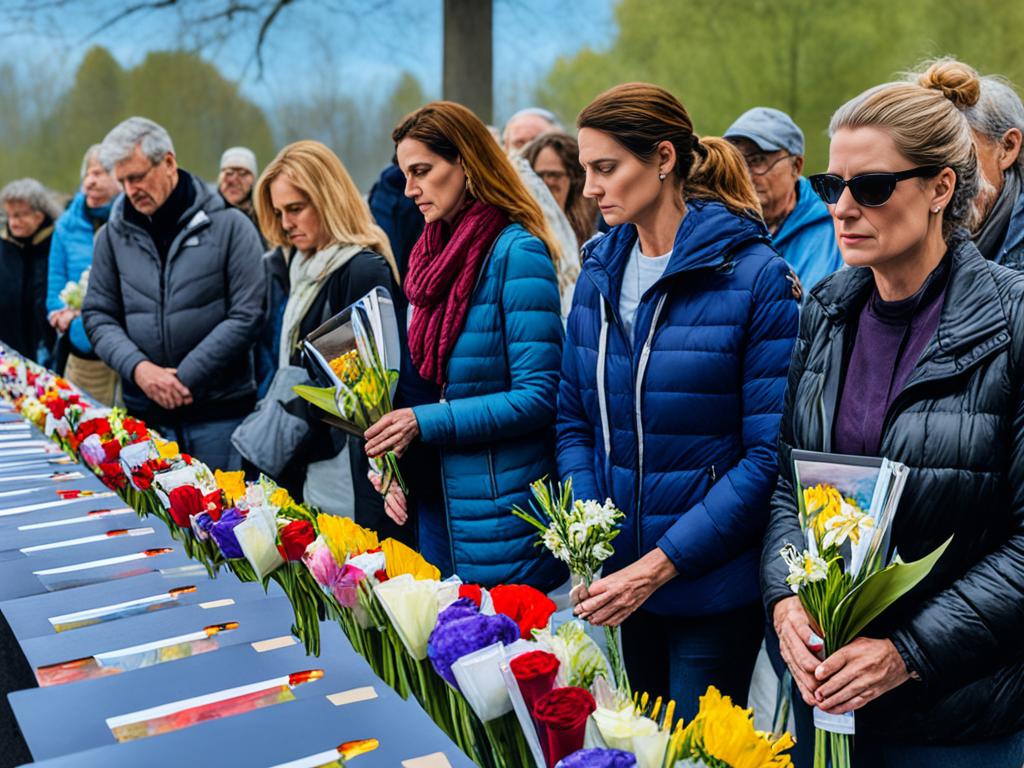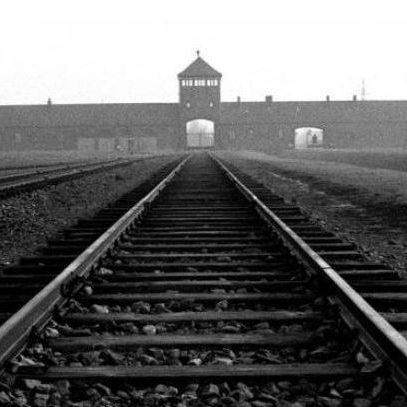In the quiet town of Oświęcim, Poland, the Auschwitz-Birkenau Memorial stands as a symbol of humanity’s triumph over evil. This place is a deep dive into human history, where millions’ stories echo.
Visitors to the Holocaust museum encounter silence. History’s dark past lingers here. The museum depicts Holocaust horrors. It emphasizes peace and history.
Walk through and join a never-forget story. This is a reminder to always tell the truth.
More than a serious history lesson here. A lasting reminder of “Never Again.” Visitors feel time slow down. It commemorates those who can no longer tell their stories.
The Auschwitz Museum goes beyond history. It recreates a past world. It amplifies the past’s echoes for future generations.
Introduction to the Auschwitz-Birkenau Memorial and Museum
The Auschwitz-Birkenau Memorial and Museum is a key resource for Holocaust education. It illuminates the Holocaust and concentration camps. It honors World War II victims in Oswiecim, Poland.
Many people have visited since its 1947 museum opening. The memorial is also a learning center. The victims include 15,000 Soviet prisoners and nearly 13,000 Warsaw residents.
This museum offers many educational programs and exhibits. Booking entry cards in advance is smart. Museum guides can explain the stories.
Online tours and classes are available. These are for individuals or groups. They discuss the museum’s early deportations and prisoner art.
Remembering Auschwitz-Birkenau victims is crucial. There are rules to keep the museum solemn. These guidelines aid respectful Holocaust reflection.
Visit the Auschwitz-Birkenau Memorial and Museum to remember and learn. It teaches us about human weakness and strength.
Preparing for Your Visit to the Auschwitz Museum
A respectful and smooth Auschwitz Museum visit requires planning. Journey begins at 55 Więźniów Oświęcimia Street entrance. Security checks take 30 minutes here. This emphasizes arriving early.
Visit the museum for at least three-and-a-half hours. You can see everything at your own pace. Please limit bags to 35x25x15 cm. You can leave your bags for a fee.
The museum assists disabled visitors. They provide free wheelchairs and transportation advice. This ensures that everyone can get the full experience.
Photos are allowed in most of the museum, except for the victims’ hair room and Block 11’s basement.
The European pack is great for learners. Top institutions like the International Center for Education about Auschwitz and the Holocaust make it. This guide helps you plan your visit, understand the history, and cope with your emotions.
| Resource Available | Description |
|---|---|
| European Pack for Visiting Auschwitz | A detailed guide created by specialists that includes organisational tips, historical information, and emotional guidance for before, during, and after the visit. |
| Accessibility Options | Services such as free wheelchair hire and tailored advice on accessible routes around the museum. |
| Photography Regulations | General permission across most areas, with specific restrictions in place to maintain the dignity of sensitive locations within the museum. |
| Luggage Storage | Paid facility available to store oversized items during museum tours, adhering to strict bag size limitations. |

Considering these details helps follow museum rules. Your visit becomes more meaningful and educational. This will deepen and respect your experience of history’s darkest times.
Navigating the Solemn Grounds of Auschwitz I and II-Birkenau
Visits to Auschwitz I and II-Birkenau deepen Holocaust memory. These places remind us of a dark time in history. Visitors see barracks’ gas chambers, and crematoria where many died.
Auschwitz I was mostly administrative. It had prisoner blocks and vital facilities. The “Arbeit macht frei” gate reveals the cruel truth. About 1.3 million people entered Auschwitz, and 1.1 million, mostly Jews, died.
Walk 1.5 miles from Auschwitz I to Auschwitz II-Birkenau, a mass murder site. This walk shows the Holocaust’s huge impact. The Nazi “Final Solution” ends at Auschwitz II-Birkenau. Even though much was destroyed, the gas chambers and crematoria remind us of the mass killings.
- Total number of persons deported to Auschwitz (1940-1945): 1.3 million
- Deaths at Auschwitz, predominantly Jews: 1.1 million
- Historical objects preserved at Auschwitz: Over 110,000 shoes, 3800 suitcases, hundreds of hairbrushes and toothbrushes, and more
- Facilities for visitors: Accessible toilets and parking, available guides for visually impaired guests.
These memories live on at the Auschwitz-Birkenau State Museum. It teaches us to avoid such horrors. The Red Army liberated these camps in 1945, and they now commemorate the Holocaust. They demonstrate human dignity’s resistance to tyranny and hate.
Guided Tours: Unveiling the Layers of History
Official guides at the Auschwitz-Birkenau Memorial and Museum can teach visitors a lot. The historical tours led by these guides are extensive and informative. This illuminates the site’s dark past.
It takes 5.5 hours for these tours. Fast entry and a detailed tour of Wawel Castle and the Rynek Underground Museum are included. Guides recount prisoner stories and Holocaust truths. They speak many languages, making tours easy for international visitors.
This is a detailed tour booking guide:
| Feature | Details |
|---|---|
| Pickup and Schedule | Hotel pickup available with tours starting between 6:00 and 11:00 to accommodate varying visitor schedules. |
| Booking and Cancellation Policy | Visitors can cancel up to 24 hours before the tour for a full refund; however, cancellations made less than 24 hours prior are non-refundable. |
| Tour Inclusions | Includes skip-the-line entrance, full-day guided tour, and a documentary screening. |
| Accessibility | Distances between points of interest within Auschwitz and Birkenau vary, accommodating visitors with different physical capabilities. |
| Contact and Registration Details | Email: info@poland-service.com, Phone: +48 727 001 040, Official address: ul. Mikołajska 26/2, Kraków, Poland. |
Going with official Auschwitz-Birkenau guides improves the experience. It honors the site’s deep stories. Thus, we honor the victims and educate others about the Holocaust.
Visitor Information: Reservations, Rules and Accessibility
A thoughtful and informed Auschwitz-Birkenau Memorial visit requires planning. There are clear rules for respectful visits. Free but limited entry passes should be booked early.
Book through the Auschwitz Museum website or visitor service center. This lets you enter and enjoy the site.
The Memorial is accessible to all. Student, 75-year-old, and disabled admission is discounted. Bring the right documents to prove.
Small bags can be left there. Bags cannot exceed 35x25x15 cm. Paid storage for larger items. Your visit goes more smoothly and respectfully.
Headphone guides are required for groups over 10. This enhances the tour and maintains quiet and respect.
Self-guided or six-hour guided tours are available. Book your guide two months ahead. Go at your own pace, but give each site 90 minutes.
The Memorial is open year-round, but maintenance may close some areas. Check before leaving to avoid surprises.

